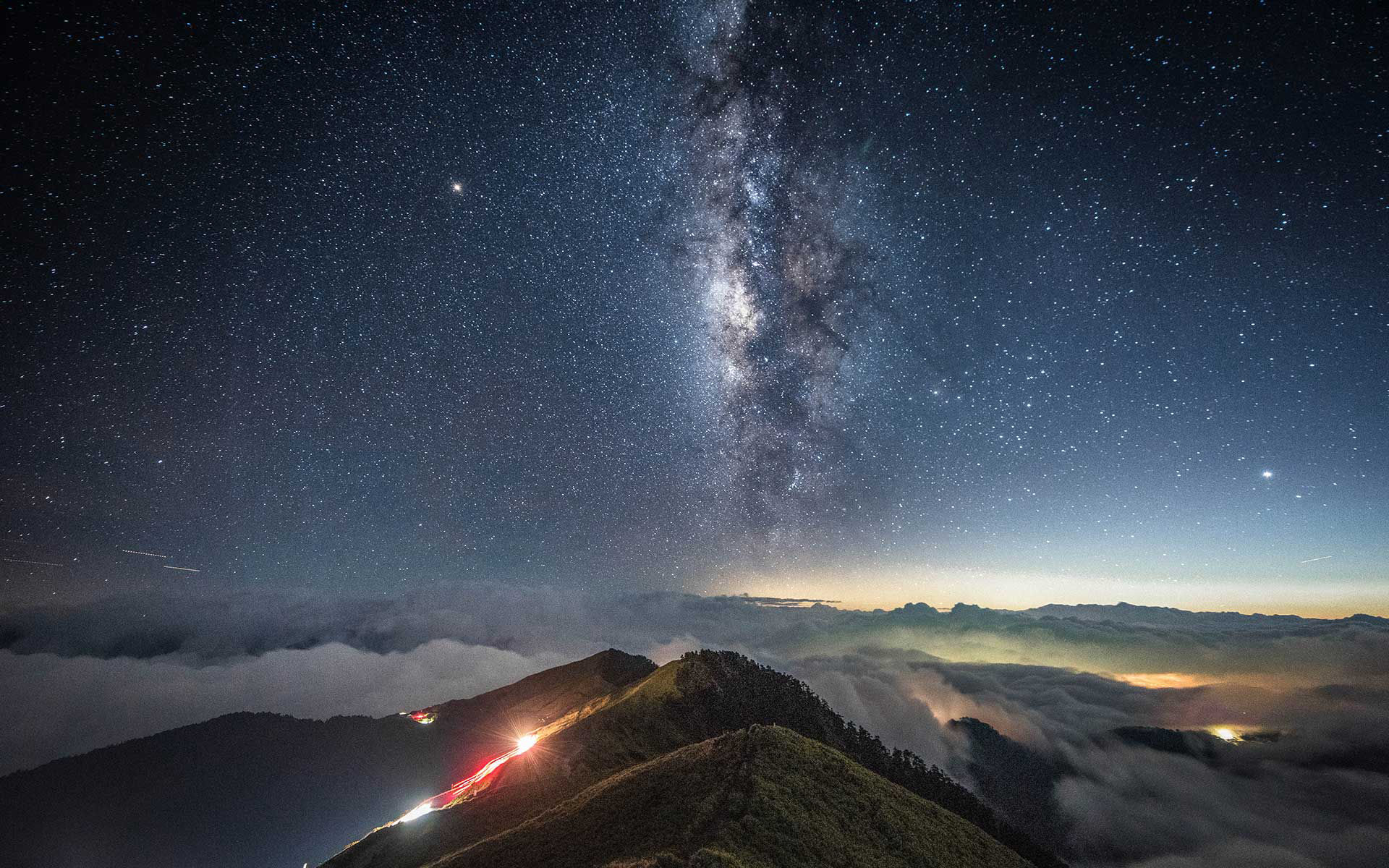
遠古的時代,人們已認出銀河、見過雲海,將大自然的鬼斧神工視為神話,直至近代科技發展才漸漸揭開它們的面紗。我們身處的太陽系只是廣闊銀河系的一小部分,在星際塵埃遮蔽的區域,依然有著數以千億計的恆星在閃爍。雲海則由地上雲霧水氣聚集而成,由上往下俯瞰,呈現如大海般起伏流動的景觀。站在合歡山主峰仰望銀河、俯視雲海,看似距離相近的兩片海,其實相隔著以光年計算的距離,永遠只能遠遠相映著。
Since ancient times, work of God
has been a common description for
amazing scenes in nature, such as the
view of the Milky Way or a sea of clouds.
However, the development of science
and technology in modern times helps
us to understand how and why they look
like this. Our solar system is just a small
part of the Milky Way. There are still
hundreds of billions of shining stars
blocked by the interstellar dust in dark
regions. A sea of clouds is formed by the
accumulation of clouds and vapor on the
ground. This phenomenon, when viewed
from above, looks very similar to the
open ocean. Standing on the top of Mt.
Hehuan’s main peak at night, the Milky
Way can be seen above with a sea of
clouds below, meeting at the skyline,
although the stars are light years away
from the clouds. .
展示地點
第二特展室
展示時間
2019.07.13 - 2020.02.16
© 國立自然科學博物館版權所有